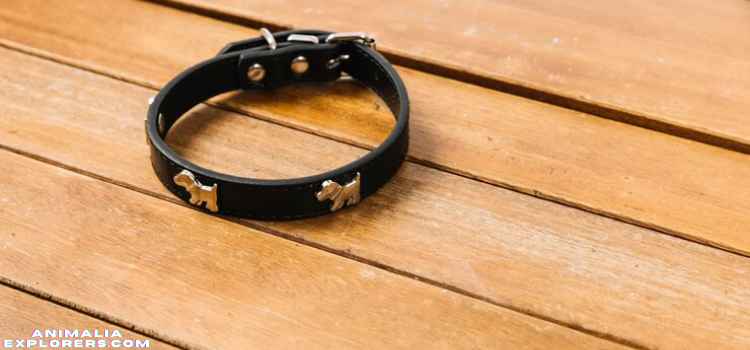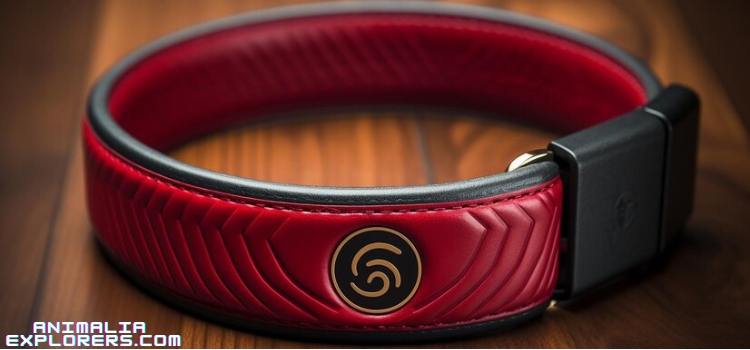The Ultimate Guide to Shock Collars for Small Dogs: What Every Pet Owner Needs to Know

Are you a proud parent of a small four-legged companion who sometimes needs a little extra guidance? Look no further! We’ve got the ultimate guide to shock collars for small dogs, packed with everything every pet owner needs to know. Whether you’re curious about their effectiveness or concerned about their safety, we’ll address all your questions and help you make an informed decision. So buckle up and get ready to discover the truth behind these controversial training tools – because your furry friend deserves only the best!
What are Shock Collars?

Shock collars are devices that deliver an electric shock to a dog when it violates specific obedience commands. Shock collars are controversial, but they have some benefits for both dogs and their owners. Generally, shock collars work best on dogs who exhibit aggressive or dangerous behavior. They can be effective in controlling such behaviors as jumping on people, barking excessively, or chewing objects.
There are several types of shock collars available on the market today: continuous-discharge (CD) collars, which deliver a high-voltage shock every time the dog barks; pulse-discharge (PD) collars, which send low-voltage shocks every few seconds; and remote controls for people to use from a distance. Collar models also vary in terms of how long the shocks last and how strong they are. Some dogs only respond to mild shocks while others may react strongly to stronger ones.
Shock collar training should only be used as a last resort after other forms of discipline have failed to control the dog’s behavior. Before using a shock collar, always read the manufacturer’s instructions and consult with your veterinarian.
Types of Shock Collars

There are a few different types of shock collars for small dogs, and each has its benefits and drawbacks. Some of the most popular types include electronic shock collars, citronella bark collars, and static shock collars. Here’s a brief overview of each:
Electronic Shock Collars
These collars use electronic shocks to discourage unwanted behaviors. They’re relatively humane compared to some other types, and many owners find them more effective than traditional shock devices. However, they can be a bit pricey, and they require batteries that must be replaced regularly.
Citronella Bark Collars
These collars release a scent of citronella (a common mosquito repellant) when activated. Dogs who are wearing the collar will learn to associate the smell with fear or anger, which can help suppress bad behavior. The downside is that citronella can be unpleasant for humans and pets alike, so it’s not always the best choice for people who live in areas with high mosquito populations.
Static Shock Collars
These collars deliver short bursts of electricity to dogs’ necks when they engage in misbehaviors such as barking or jumping. Unlike electronic shock collars, which rely on batteries, static shock devices work with standard household current. However, they’re less humane than other types of shock collars because they don’t use electrical stimulation; instead, they pull the dog’s hair to create an electric charge.
How do Shock Collars Work?
Shock collars work by shocking your dog when they disobey. Shock collars are generally considered to be safe for dogs, but there are a few things to keep in mind before using them.
First, always read the instructions that come with your shock collar. Many have specific warnings about how long the shocks should last and what should be done if the collar emits a high-pitched sound or flashes lights.
Second, make sure you know what type of collar your dog is wearing. There are two main types of shock collars: remote-enabled and static-electric. Remote-enabled collars send shocks wirelessly from a transmitter collar worn by the owner; static-electric collars use electricity generated by military-grade batteries to deliver shocks.
Third, be sure to train your dog correctly before using a shock collar. Shock collars can be very effective at correcting bad behavior, but they’re only as good as the training that preceded them. Use positive reinforcement methods such as treats and praise when your dog behaves correctly instead of using punishment such as shock collar use.
Benefits of Shock Collars for Dogs

Shock collars are one of the most popular dog training tools on the market. They work by delivering an electric shock to a dog when it does something that the trainer deems incorrect, such as barking or chewing. Shock collars can be used for both positive reinforcement (reinforcing good behavior) and punishment (punishing lousy behavior).
Shock collars come in many different styles and sizes, and they vary in terms of how powerful the shock is. The smallest shocks are around 2 volts and the strongest shocks can deliver up to 300 volts. It’s important to choose a shock collar that’s appropriate for your dog’s size and weight, as well as your own personal safety guidelines.
Some of the key benefits of using a shock collar include:
-They can be very effective at teaching dogs new behaviors, such as not jumping on people or furniture
-They can be used to break bad habits such as barking or chewing
-They’re safe for use on puppies and young dogs
-Shock collars don’t cause pain or injury like physical punishment methods do
Downsides of Shock Collars for Dogs
Using shock collars for dogs can have potential downsides. The collar can be aversive and cause anxiety in the dog, leading to problems such as chewing, digging, pacing, and even biting. Moreover, the shock may not always be effective at stopping the dog’s behavior, which could lead to continued punishment or, worse yet, re-occurrence of the problem behavior. In extreme cases where a shock collar is used excessively or incorrectly, it can also injure or even kill the dog.
Should I Use a Shock Collar on My Dog?

Shock collars are increasingly being used by pet owners to manage their dogs’ behavior. Shock collars use an electric shock to inhibit a dog’s behavior. While there are a few things to consider before using a shock collar, the vast majority of pet owners find that they work well for managing their dog’s behavior.
There are three main types of shock collars: remote-controlled, automatic, and electronic. Remote-controlled shocks last for five minutes and automatic shocks last for 10 seconds. Electronic shock collars have a timer that can be set to allow up to 12 continuous shocks or one shock every two seconds. All three types of shock collars should only be used as a last resort after other forms of discipline have not worked.
Before using a shock collar on your dog, it is important to understand how it works and what potential risks there are. When shock Collar electrodes contact the skin of your dog they cause an electric current which can send an intense pain signal through your dog’s body. The current from the collar can also cause muscle spasms in your dog’s neck or shoulders, making it difficult for them to move or breathe. There is also the potential for long-term damage if the current is too high or if your dog has metal implants in their neck or spine that could be harmed by electricity.
When choosing whether to use a shock collar, it is important to consider your dog’s temperament and personality as well as your intentions for using the collar
FAQs
1. Do vets recommend bark collars?
Veterinarians’ opinions on bark collars may vary. Some may recommend them as a last resort for specific cases of excessive barking when other training methods have failed. However, it’s essential to consult with your vet before using a bark collar to ensure it’s appropriate for your dog’s individual needs and well-being.
2. What are the negatives of bark collars?
Bark collars, while they can be effective, have potential drawbacks. Some of the negatives include:
Discomfort or stress for the dog.
Possibility of overuse or misuse leading to anxiety or fear.
Lack of addressing the underlying cause of barking.
Potential for false corrections due to environmental noise.
3. What age is safe for bark collars?
The safe age for using bark collars can vary depending on the type of collar and the dog’s size and temperament. In general, it’s advisable to wait until a dog is at least six months old or consult with a veterinarian or professional dog trainer to determine the appropriate age and type of collar for your specific dog.
4. How do you use a bark collar on a small dog?
When using a bark collar on a small dog, it’s essential to follow the manufacturer’s instructions carefully. Here are some general steps:
Ensure the collar fits snugly but not too tight around the dog’s neck.
Choose the appropriate correction level (usually starting with the lowest).
Monitor your dog’s reaction to the collar, and ensure it doesn’t cause distress or fear.
Conclusion
Many people claim that shock collars are cruel and ineffective, making them one of the most controversial pieces of pet equipment. Do you think that’s true? The purpose of this comprehensive guide is to explain the different types of shock collars on the market and to show you which ones are suitable for small dogs. Also discussed will be how to use a shock collar properly and how to ensure your furry friend’s safety. This guide will help you purchase a shock collar for yourself or as a gift, whether you’re considering it for yourself or someone else.






